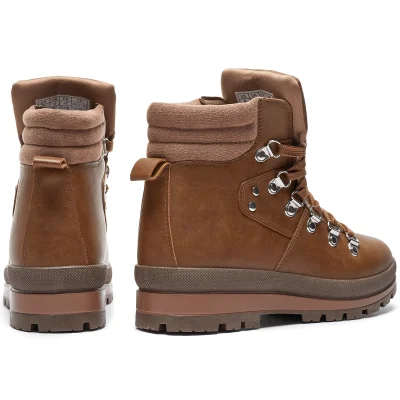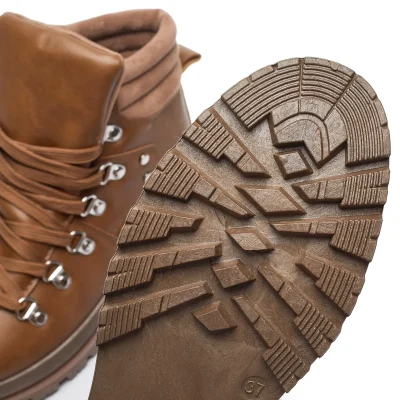Boot sole technology has advanced significantly in recent years, with innovations focused on enhancing both comfort and performance. Here are some notable advancements in boot sole technology:
1. Cushioning and Shock Absorption
- EVA (Ethylene-Vinyl Acetate) Midsoles: Lightweight and cushioned, EVA midsoles provide excellent shock absorption, reducing foot fatigue during long periods of wear.
- PU (Polyurethane) Midsoles: PU midsoles offer durable cushioning and rebound properties, providing long-lasting comfort and support.
- Gel Inserts: Gel inserts in the midsole or heel area absorb impact and provide targeted cushioning, enhancing comfort and reducing strain on joints.
2. Energy Return
- TPU (Thermoplastic Polyurethane) Energy Plates: TPU plates integrated into the midsole provide energy return, enhancing propulsion and reducing fatigue during walking or running.
- Spring Technology: Some boot soles incorporate springs or elastic materials to store and release energy with each step, improving efficiency and comfort.
3. Stability and Support
- Arch Support: Boot soles with built-in arch support provide stability and reduce the risk of overpronation or supination, promoting proper foot alignment and reducing fatigue.
- Heel Cups: Molded heel cups cradle the heel and provide additional support, enhancing stability and reducing the risk of injuries such as plantar fasciitis.
4. Adaptive Cushioning
- SmartFoam Technology: SmartFoam adapts to the wearer’s foot shape and gait, providing customized cushioning and support for optimal comfort and performance.
- Air Cushioning: Some boot soles feature air pockets or chambers that adjust to the wearer’s weight and movement, providing responsive cushioning and shock absorption.
5. Moisture Management
- Breathable Materials: Boot soles made from breathable materials allow air circulation, reducing heat and moisture buildup inside the boot and preventing discomfort and odor.
- Moisture-Wicking Technology: Moisture-wicking liners or treatments draw moisture away from the foot, keeping feet dry and comfortable even during intense activity.
6. Temperature Regulation
- Thermal Insulation: Insulated boot soles trap heat to keep feet warm in cold conditions, while breathable designs prevent overheating in warm weather.
- Heat-Reflective Materials: Some boot soles incorporate heat-reflective materials to minimize heat loss and maintain warmth in cold environments.
7. Traction and Grip
- Lug Patterns: Advanced lug patterns with multidirectional treads provide superior traction on various surfaces, including wet, rocky, and uneven terrain.
- Rubber Compounds: High-quality rubber compounds, such as Vibram, offer excellent grip and durability, enhancing stability and confidence on challenging terrain.
8. Weight Reduction
- Lightweight Materials: Boot soles made from lightweight materials, such as EVA foam or advanced polymers, reduce overall boot weight without sacrificing comfort or performance.
- Hollow Designs: Some boot soles feature hollow or honeycomb structures to reduce weight while maintaining strength and support.
9. Customization and Personalization
- Custom Footbeds: Moldable footbeds or insoles allow users to customize the fit and support of their boots, addressing specific foot shape or alignment issues for personalized comfort.
- 3D Printing: Advancements in 3D printing technology enable the production of custom-designed boot soles tailored to individual preferences and requirements.
10. Sustainability
- Recycled Materials: Boot soles made from recycled rubber or other eco-friendly materials reduce environmental impact and promote sustainability.
- Biodegradable Soles: Biodegradable boot sole materials break down naturally at the end of their lifecycle, minimizing landfill waste and pollution.
Conclusion
These innovations in boot sole technology demonstrate a commitment to improving comfort, performance, and sustainability in footwear. By incorporating advanced materials, designs, and manufacturing techniques, modern boot soles offer enhanced cushioning, support, traction, and temperature regulation, resulting in a more comfortable and enjoyable wearing experience for users.


















